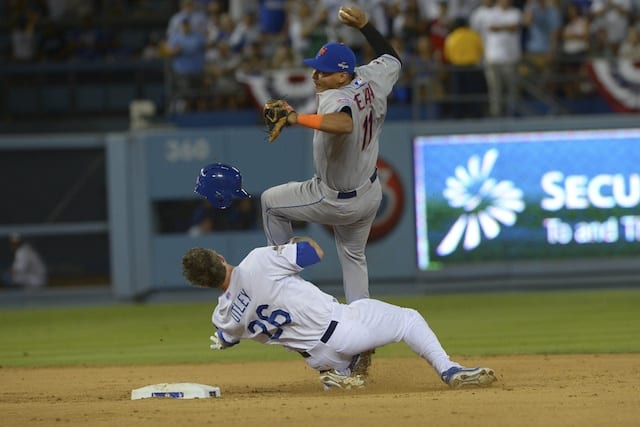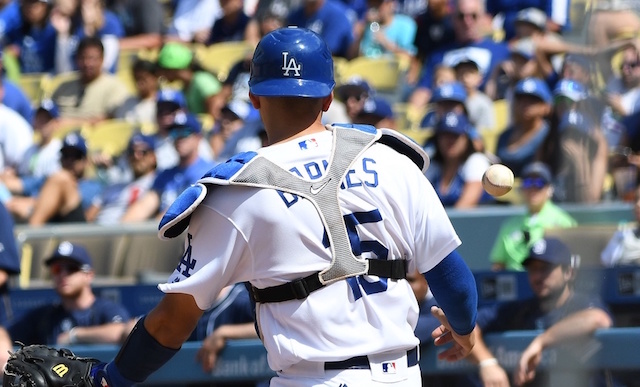As expected, Major League Baseball and the MLB Players Association announced a new set of rules for slides into second base while attempting to break up a double play and two pace-of-game initiatives.
Under the new rules, which take effect for the 2016 season, runners trying to break up a double play must make a “bona fide attempt to reach and remain on the base.” Runners are still allowed to initiate contact with an infielder.
However, runners are not permitted to kick their legs above a fielder’s knee, throw an arm or upper portion of their body at a fielder, or change their pathway once they begin to slide or utilize a “roll block,” which Los Angeles Dodgers infielder Chase Utley did to New York Mets shortstop Ruben Tejada in Game 2 of the 2015 National League Division Series.
Tejada suffered a broken leg on the play, ending his season, and Utley received a two-game suspension. He appealed the ruling and his hearing is expected to be held during Spring Training.
While Utley’s slide may be credited with sparking reform, it wasn’t the only instance in which an infielder was lost due to injury on a play at second base.
Last September, Chicago Cubs utility man Chris Coghlan broke Pittsburgh Pirates infielder Jung Ho Kang’s leg with a questionable slide as he attempted to prevent the Pirates from turing a double play.
In addition to the new slide rules at second base, plays which are reviewable, the neighborhood play is also eligible for replay review — they were previously exempt. The change means infielders will now need to touch the base while in possession of the ball.
Rule changes in the pace-of-game department include between-inning clocks getting reduced from 2:25 to 2:05 for nationally televised games, and 2:45 to 2:25 for all other games. Lastly, mound visits by managers and pitching coaches will be bound to a 30-second time limit that will begin once the manager or coach steps foot out of the dugout.








